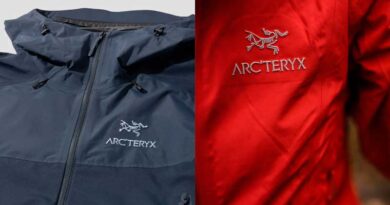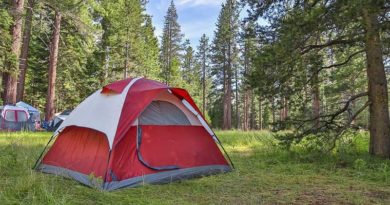Hydrophobic Down: Is It Worth It?
Synthetic fill is known for its water-repellent nature. It is the one you want to get if you are camping in sustained wet conditions because it retains its insulation. But that changed some 10 years ago when the US military developed hydrophobic down.
Outdoor brands jumped on the bandwagon and heavily advertised their hydrophobic down products. But as we all know, down products aren’t cheap. Taking away the only weakness would only make it more expensive.
Just because it sounds better and costs a lot doesn’t mean you should get it. Let’s dig into some more details of whether you should go broke trying to own a hydrophobic down product.
What is Hydrophobic Down?
Down fill is the best insulation available for most situations but it has a major drawback; it loses its insulation when it gets wet. Down has air pockets in between its loft. When it gets wet, the water fills up the air pockets and displaces the air making down lose its loft. Making down hydrophobic, then, makes sense.
When down is treated with hydrophobic coatings, it becomes hydrophobic down. These hydrophobic coatings are either silicone-based, wax-based, or PFC-based and have been widely adopted by the outdoor industry.
Why does it come to Hydrophobic Treatment?
Down is extremely hydrophobic, to begin with. This bit of information might surprise you but if you don’t believe us, go look at a duck or a goose in water. They never get wet. Man-made hydrophobic technology is nothing compared to how hydrophobic natural down is.
The problem is that down smells and starts to rot because of all the natural oils on it. It requires a lot of cleaning. Consequently, that cleaning reduces the hydrophobicity of down. It sounds absurd that manufacturers have to treat the down with synthetic chemicals to make it hydrophobic, especially, when the industry is trying to reduce the use of chemicals due to environmental impact.
It’s more about the Construction
It should be obvious that if you want to keep something dry, you start from the outside. In case of snow or moisture coming off from you, a water-repellent shell is far better than to coat something inside. If you are sleeping somewhere wet, the shell of your bag or jacket would get soaked which is not good even if the hydrophobic down inside stays dry. Market-leading coatings on fabrics like Drilite Loft and membranes like Gore-Tex INFINIUM would do a much better job in such situations.
Life of Hydrophobic Coatings
Down sleeping bags and jackets last a long time. On the contrary, hydrophobic coatings don’t last long at all. Now, a hydrophobic coating may last longer on down because it’s inside a sleeping bag or a hiking jacket but it still won’t last anywhere near the life of these products.
There is also the environmental aspect at play here. The more synthetic and environmentally harmful the coating, the longer it will last. The more organic and environmentally friendly the coating, the shorter the period it will last.
Why you Probably don’t need Hydrophobic Treatment
Hydrophobic down combines the best of both worlds. It is lightweight, has a better weight-to-warmth ratio, packs tights because it is down. But it repels water and dries faster just like synthetic fill which ordinary down fill lacks.
Hydrophobic down combines the best of both worlds. It is lightweight, has a better weight-to-warmth ratio, packs tights because it is down. But it repels water and dries faster just like synthetic fill which ordinary down fill lacks.
There is plenty of evidence of people going on hard, demanding adventures in temperatures below freezing point with snow did fine with non-hydrophobic down gear. Again, it also comes down to the construction and the way you handle your down products. If you know how to handle and protect down products properly, then you don’t need to spend extra on hydrophobic down.
Hydrophobic down is no miracle that would keep you dry under all circumstances. It increases the operating period of down products in damp conditions but hydrophobic down also has a breaking point where it gets wet and saturated.
Just because you have hydrophobic down doesn’t mean you can now go play in the pouring rain. Hydrophobic down only gives you more room for error. But you would and should take the same precautions you would with an ordinary down product.
When should you use Hydrophobic Down?
All above being said, it doesn’t mean that you would be wasting your money on overpriced hydrophobic down products. Hydrophobic down is effective in lightweight down garments that are mostly used for short periods in damp conditions. Using these garments above freezing in moist conditions where the down dries faster is beneficial.
Comparing with Synthetic Fill
So, should you rely on down hydrophobic down instead of synthetic fill in the mixed mountain trail conditions? And the answer is no. I believe it’s better to go with synthetic insulation because it’s cheaper and can handle the weather well. The only situation where hydrophobic down really makes a difference is on a multi-day expedition where a slow buildup of moisture and limited drying time is experienced. It will also make a difference for people who use it every day in winter traveling to work or walking the dog.
Final Thoughts
Hydrophobic down does have its place. It’s just not necessary for ordinary folk. Hydrophobic down was developed by the US military, which should tell you something about its intended use. It’s for extreme use which a common backpacker would rarely find themselves in. So why pay the higher price.
If you camp in damp conditions too much you can get yourself synthetic fill and it will get the job costing you far less. Ordinary down fill with the water-repellent shell would be sufficient in most cases. However, hydrophobic down is for you if you want to go for ultralight backpacking trips in rain or snow where the weight-to-warmth ratio matters.




